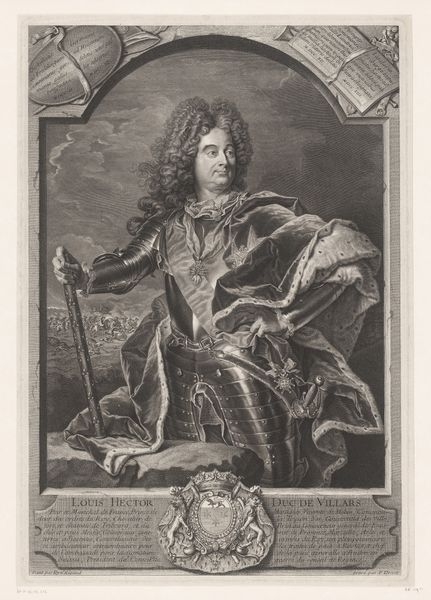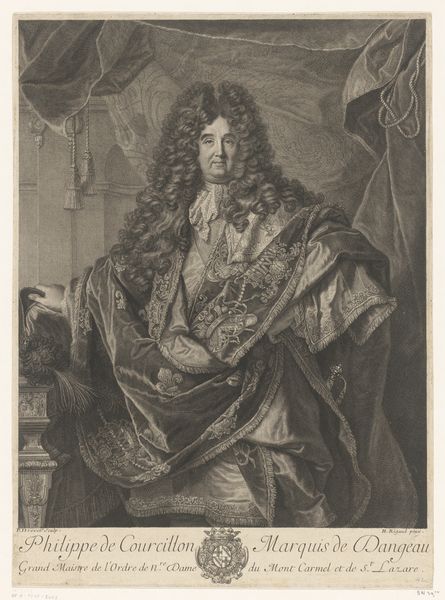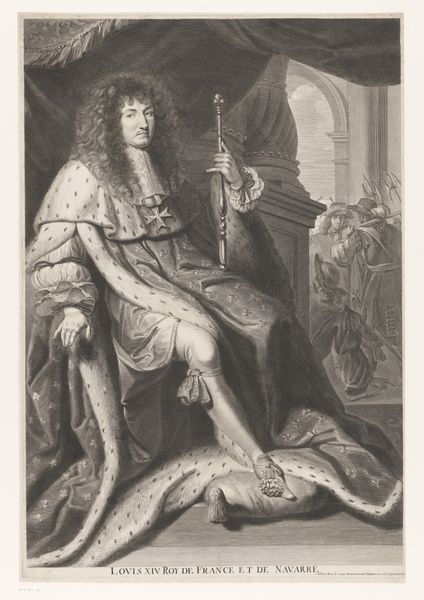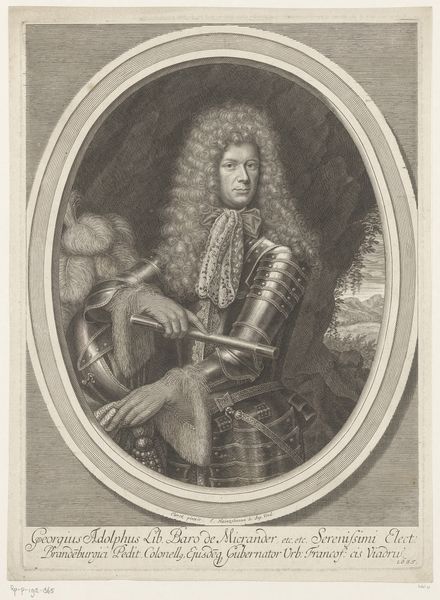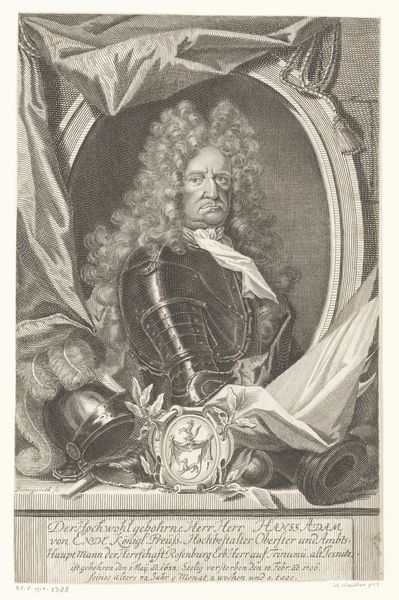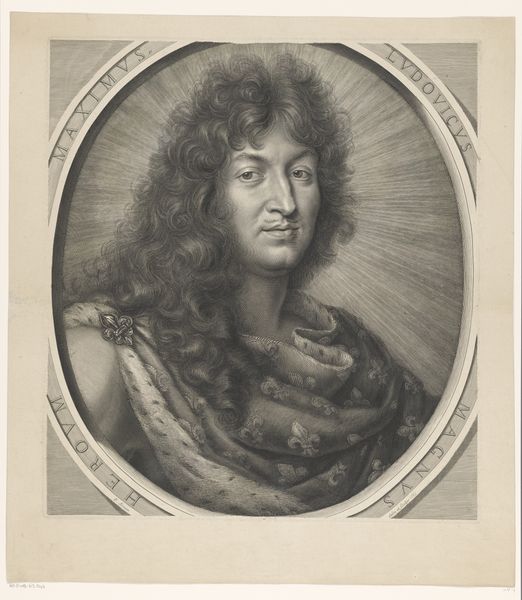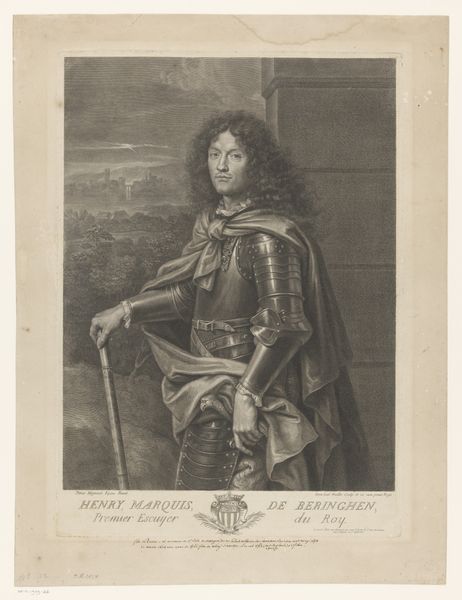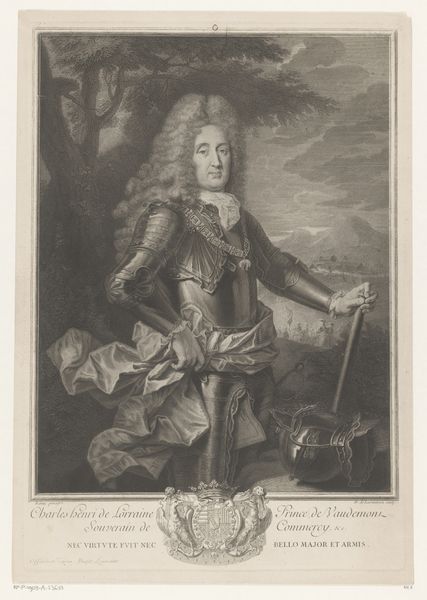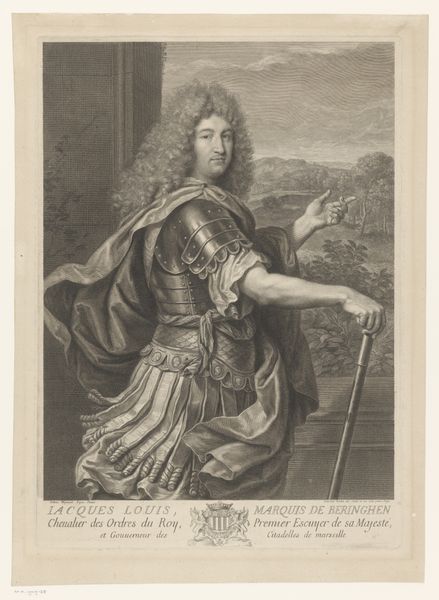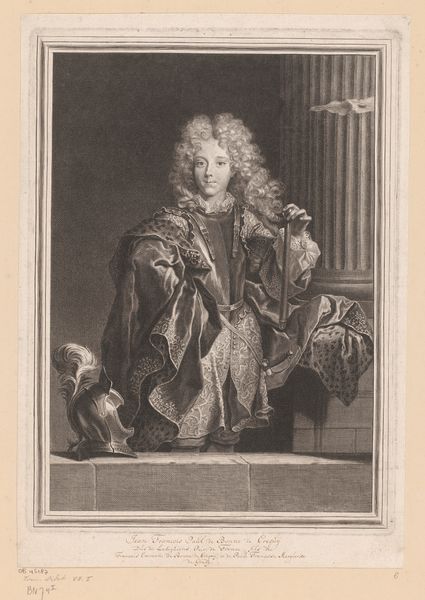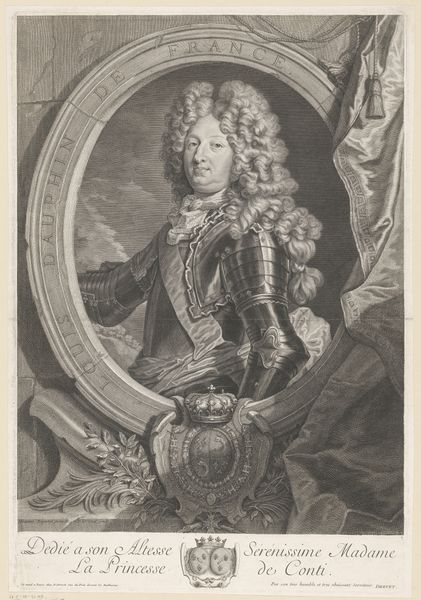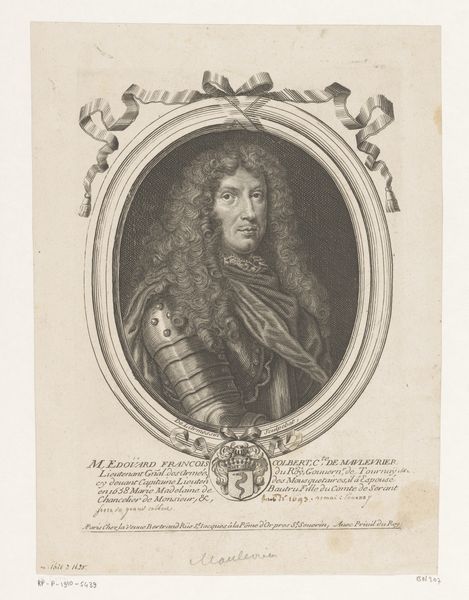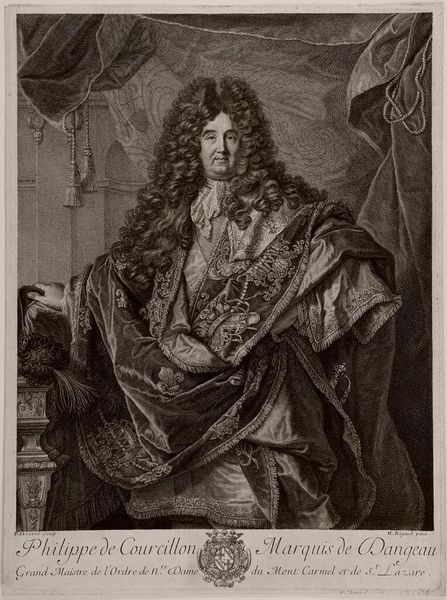
engraving
#
portrait
#
baroque
#
old engraving style
#
figuration
#
line
#
history-painting
#
engraving
Dimensions: height 668 mm, width 529 mm
Copyright: Rijks Museum: Open Domain
Editor: Here we have Pierre Drevet’s “Portrait of Louis XIV of France,” made in 1692. It’s an engraving, currently held at the Rijksmuseum. The detail is incredible. It's like a snapshot into a very specific idea of power. What do you see in this piece? Curator: What strikes me immediately is the strategic construction of power through representation. This isn't simply a portrait; it's a carefully crafted image of absolute authority in late 17th century France. Consider Louis XIV's reign—a period defined by centralization and the construction of Versailles. How does the armor, the wig, even the positioning of his hand contribute to that constructed image? Editor: Well, the wig is pretty extravagant. It seems like more than just fashion; it’s…a statement? And the armor gives an impression of military might, of course. Curator: Exactly. This wasn’t just about vanity or even simple representation; it was carefully manufactured to support his claim to power, influencing perceptions both domestically and abroad. Editor: So, the portrait serves almost as propaganda, showcasing Louis XIV's vision of himself and his rule? Curator: Precisely. Consider how engravings like these circulated. They shaped opinions and reinforced the King's carefully constructed image, especially among those who couldn't access painted portraits or Versailles. Can we consider this an early form of political marketing? Editor: That's a fascinating angle. I hadn't considered how it might function as a deliberate strategy of self-promotion, of early marketing even. I was so focused on the aesthetic. Curator: Seeing art through the lens of power relations, considering who benefits from its circulation, can reveal so much about its original intent and impact. It challenges us to question whose stories are told and how. Editor: Thanks. It’s so helpful to think about context and how it gives portraits a whole new dimension.
Comments
No comments
Be the first to comment and join the conversation on the ultimate creative platform.
